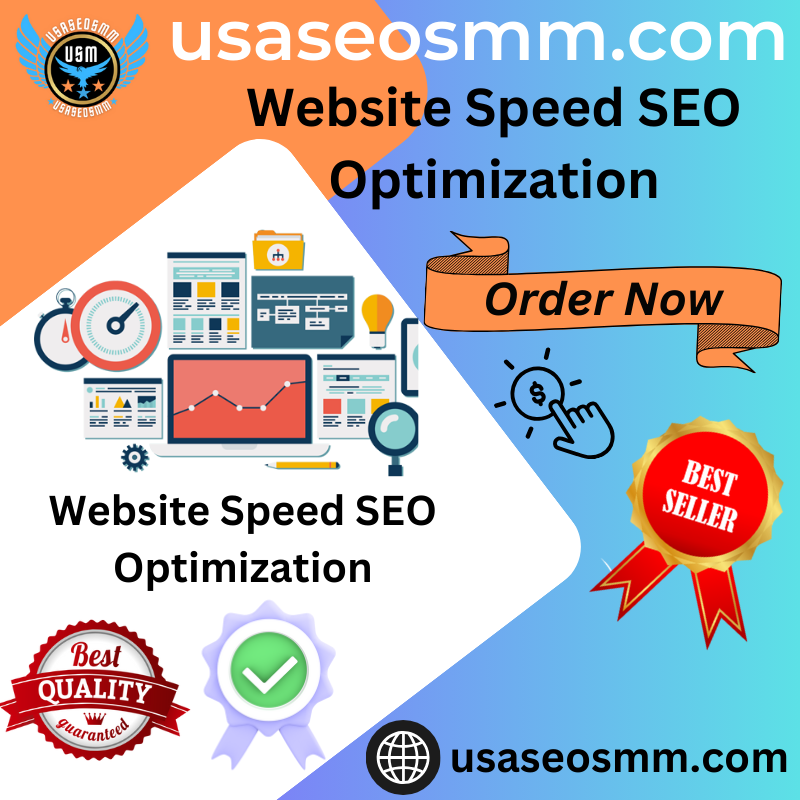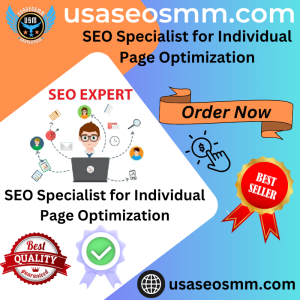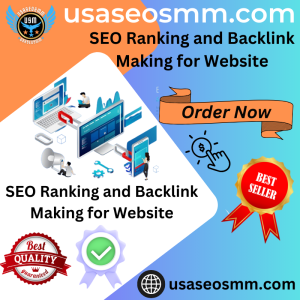Website Speed SEO Optimization
To optimize website speed for SEO, prioritize image compression, minify CSS and JavaScript files, enable browser caching, and utilize content delivery networks. Ensuring fast load times enhances user experience, reduces bounce rates, and improves search engine rankings.
Effective website speed SEO optimization is crucial for enhancing user experience, reducing bounce rates, and driving higher search engine rankings. By prioritizing image compression, minifying CSS and JavaScript files, enabling browser caching, and utilizing content delivery networks, businesses can ensure faster load times, thereby improving overall website performance.
With a streamlined and quick-loading website, users are more likely to engage with the content, leading to higher conversions and improved ROI. Implementing these optimizations not only benefits SEO but also contributes to a positive user experience, ultimately leading to improved website performance and visibility.
Why Website Speed Is Important
Website speed plays a crucial role in SEO optimization. Faster websites can achieve higher rankings in search engine results, leading to better user experience, increased website traffic, and improved conversion rates.
Website speed is a critical factor that can make or break your online success. In today’s fast-paced digital world, users have little patience for slow-loading websites. If your website takes forever to load, visitors will quickly lose interest and navigate away. To ensure a positive user experience and boost your SEO rankings, it is paramount to optimize your website speed. In this article, we will explore the impact of website speed on both user experience and SEO rankings.
Impact On User Experience
Website speed directly affects user experience, which plays a vital role in determining whether visitors stay on your website or leave. Here’s why:
- Improved Engagement: A fast-loading website ensures that users can quickly access the information they are looking for, increasing their engagement levels.
- Reduced Bounce Rate: When your website loads slowly, visitors are more likely to get frustrated and abandon it. A high bounce rate negatively impacts your website’s performance and rankings.
- Enhanced User Satisfaction: Users appreciate fast websites. By delivering an excellent user experience with quick-loading pages, you can enhance user satisfaction and encourage repeat visits.
Impact On Seo Rankings
Website speed is not only vital for user experience but also significantly impacts your SEO rankings. Search engines prioritize user experience, and a slow-loading website can negatively affect your rankings. Here’s how:
- Page Crawl Frequency: Search engine bots regularly crawl websites to index their content. If your website takes too long to load, search engines may crawl it less frequently, resulting in outdated content and missed indexing opportunities.
- Search Engine Bot Efficiency: Fast-loading websites are easier for search engine bots to crawl and analyze. This can lead to faster indexing and better understanding of your webpage’s content.
- Ranking Signals: Website speed is a crucial ranking parameter for search engines. A slow site may receive a lower ranking compared to faster competitors, as search engines want to deliver the best user experience possible.
So, optimizing your website speed is a win-win situation. Not only will you improve user experience, but you will also enhance your SEO rankings, leading to increased visibility and organic traffic.
Factors Affecting Website Speed
Website speed is a crucial aspect of SEO optimization. Several factors, including server response time, page size, and code optimization, can impact the loading speed of a website, influencing its overall performance and search engine rankings.
Factors affecting website speed play a significant role in SEO optimization. Server performance, image size and compression, and code efficiency are crucial aspects that directly impact a website’s loading speed.
Server Performance
Server performance is a critical factor affecting website speed. A website hosted on a slow server will experience longer load times. Ensure to choose a reliable hosting provider with high uptime and fast response times.
Image Size And Compression
Large image sizes can significantly slow down a website. Employing efficient image compression techniques and properly sizing images can drastically improve loading times. Use formats like JPEG and PNG for better compression.
Code Efficiency
Optimizing the code of a website can enhance its speed. Minify CSS and JavaScript files, remove unnecessary white spaces, and leverage browser caching to improve website performance. Furthermore, utilizing a Content Delivery Network (CDN) can distribute website resources and speed up loading times. By understanding these factors and taking appropriate measures to address them, website owners can effectively improve their website speed, leading to enhanced user experience and better search engine rankings.
How To Measure Website Speed
Welcome to our comprehensive guide on website speed SEO optimization. In this section, we will delve into the pivotal aspect of measuring website speed, uncovering the methods to evaluate and enhance your website’s performance.
Using Gtmetrix
GTmetrix is a powerful tool that provides in-depth insights into your website’s speed and performance. With GTmetrix, you can assess various performance metrics such as page load time, total page size, and the number of requests made. To utilize this tool, simply enter your website’s URL, and GTmetrix will generate a detailed report outlining your site’s loading speed, offering actionable recommendations for improvements.
Using Google Pagespeed Insights
Google PageSpeed Insights is an invaluable resource for evaluating your website’s speed from the perspective of user experience and SEO. By inputting your website’s URL into the tool, you can gain comprehensive insights into your site’s performance on both desktop and mobile devices. The report provided by Google PageSpeed Insights includes critical information, such as performance scores, opportunities for improvement, and diagnostic data highlighting specific areas that require attention.
Techniques For Improving Website Speed
Website speed is an essential factor when it comes to SEO optimization. Slow-loading websites can lead to high bounce rates and negatively impact user experience. To ensure your website loads quickly and efficiently, it’s crucial to implement various techniques for improving website speed. In this article, we will explore three essential techniques: Optimizing Images, Caching, and Minifying CSS and JavaScript.
Optimizing Images
Images play a crucial role in website design and user engagement. However, unoptimized images can significantly slow down your website. By optimizing images, you can reduce their file size without compromising on quality. Here are three effective methods for optimizing images:
- Resize your images: Before uploading any images to your website, make sure to resize them to the appropriate dimensions. Large images can take longer to load, causing delays. By resizing images to the required size, you can significantly improve your website’s speed.
- Compress images: Image compression is another effective technique. Numerous online tools and plugins allow you to compress images without losing too much quality. Compressed images load faster, resulting in better website performance.
- Use the correct image format: Choosing the right image format is essential for optimizing your website speed. For images with lots of colors, consider using JPEG format. For simple graphical images or logos, PNG or SVG formats are more suitable. By selecting the appropriate format for each image, you can further reduce their file size.
Caching
Caching is an effective technique that can drastically improve your website’s speed and performance. Caching involves storing static versions of your web pages, allowing them to load quickly for returning visitors. This technique reduces the need for processing dynamic content repeatedly, leading to faster loading times. Implementing caching can be done through several methods:
- Browser caching: By setting caching headers, you can instruct a user’s browser to store certain files temporarily. This means that when visitors return to your website, their browsers will load cached files instead of making requests to the server, resulting in faster page loading.
- Server caching: Implementing server-side caching can have a significant impact on your website’s speed. Plugins and tools like Varnish Cache or Redis can cache dynamic content on the server level, reducing the load time for visitors.
- Content Delivery Network (CDN): A CDN is an excellent solution for improving website speed, especially for global audiences. By using a CDN, your website’s static content is stored on multiple servers worldwide, ensuring faster delivery to users regardless of their location.
Minifying Css And Javascript
CSS and JavaScript files can often contain unnecessary whitespace, comments, and characters that increase their file size. Minifying these files involves removing these unnecessary elements, resulting in smaller file sizes and faster loading times. Here’s how you can minify your CSS and JavaScript:
| Technique | Description |
|---|---|
| CSS Minification | Use online tools or plugins to remove whitespace, comments, and unnecessary characters from your CSS files. This process significantly reduces file size and improves website speed.< |
| JavaScript Minification | Similar to CSS minification, several tools and plugins are available to minify your JavaScript files. By removing unnecessary code elements, you can enhance your website’s performance. |
By implementing these techniques for improving website speed, you can create a faster and more efficient website that provides a better user experience. Remember, optimizing images, utilizing caching, and minifying CSS and JavaScript are crucial steps for enhancing your website speed and boosting your SEO efforts.
Common Website Speed Optimization Mistakes To Avoid
When it comes to website speed optimization, it’s essential to avoid common mistakes that can negatively impact your site’s performance and user experience. Ignoring mobile optimization, not monitoring performance, and using too many plugins are some of the most common mistakes to keep in mind. By addressing these issues, you can ensure your website loads quickly, ranks well in search engine results, and delivers an exceptional user experience.
Ignoring Mobile Optimization
Nowadays, more people are accessing the web through their mobile devices than ever before. Ignoring mobile optimization can be detrimental to your website’s speed and overall SEO. Mobile users have different needs and expectations, and if your website isn’t responsive or optimized for mobile devices, it will load slowly and provide a poor user experience.
Not Monitoring Performance
If you don’t monitor your website’s performance regularly, you may not be aware of any speed issues. Regular monitoring allows you to identify performance bottlenecks, slow-loading pages, or other issues that may be affecting your website speed. By tracking your site’s performance, you can make necessary adjustments and improvements to optimize its speed and overall user experience.
Using Too Many Plugins
While plugins can add functionality to your website, using too many of them can significantly impact its speed and performance. Each plugin you add to your website requires additional resources to load and execute, which can slow down your site. It’s crucial to review and assess the necessity of each plugin regularly. Remove any unnecessary or outdated plugins to keep your website lean and fast. In conclusion, optimizing the speed of your website is crucial for both user experience and search engine rankings. By avoiding common mistakes such as ignoring mobile optimization, not monitoring performance, and using too many plugins, you can ensure your website is fast, efficient, and user-friendly. Regularly assessing and optimizing your website’s speed will lead to higher visitor engagement, improved conversions, and ultimately, success in the online world.
Frequently Asked Questions Of Website Speed Seo Optimization
How Does Website Speed Affect Seo?
Website speed plays a crucial role in SEO. Slow loading websites have higher bounce rates, leading to lower rankings on search engine results pages (SERPs). A faster website enhances user experience, decreases bounce rates, improves usability, and increases the likelihood of higher rankings.
What Are The Benefits Of Optimizing Website Speed?
Optimizing website speed offers numerous benefits. It improves user experience, reduces bounce rates, increases the likelihood of conversions, boosts search engine rankings, and enhances overall website performance. Moreover, optimized website speed also improves mobile browsing experience, which is crucial in today’s mobile-dominated world.
How Can I Improve My Website’s Loading Time?
Improving website loading time can be achieved through various methods. Some effective ways include optimizing image sizes, minifying CSS and JavaScript files, utilizing caching techniques, reducing server response time, and employing content delivery networks (CDNs). By implementing these techniques, website owners can significantly enhance their website loading speed.
Why Should I Compress Images For Website Speed?
Compressing images is essential for website speed optimization. Large image sizes can significantly slow down loading times. By compressing images, you reduce their file size without sacrificing quality. This leads to faster loading times and improves overall website performance, resulting in better user experience and SEO rankings.
Conclusion
To improve your website’s SEO, optimizing its speed is crucial. A fast-loading website not only enhances user experience but also boosts search engine rankings. By implementing techniques such as image compression, minifying code, and enabling browser caching, you can significantly reduce your website’s loading time.
Remember, a speedy website not only keeps visitors engaged but also attracts new ones. So, prioritize website speed optimization to stay ahead in the digital race.






Reviews
There are no reviews yet.